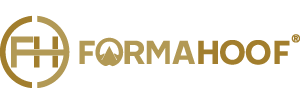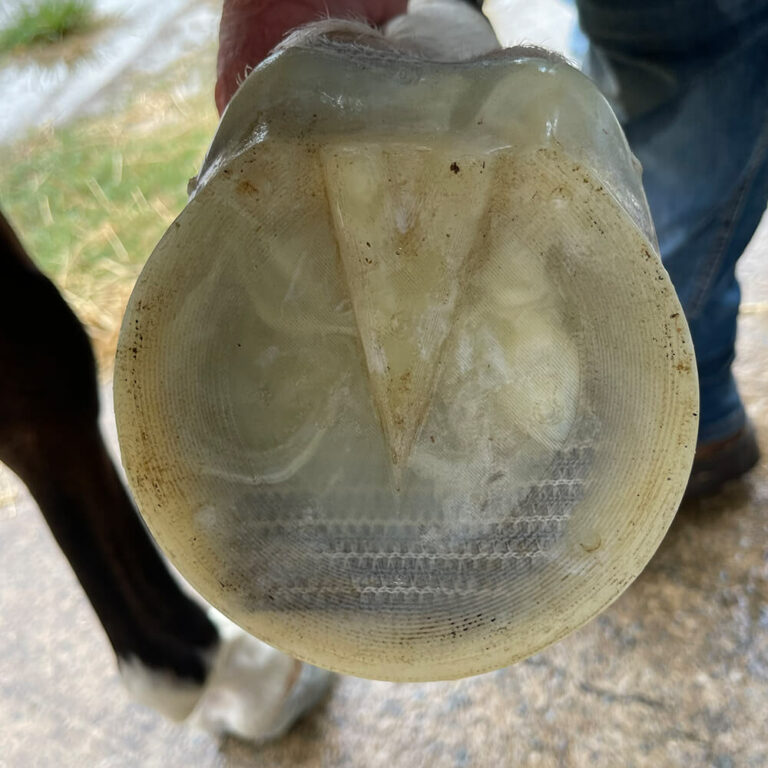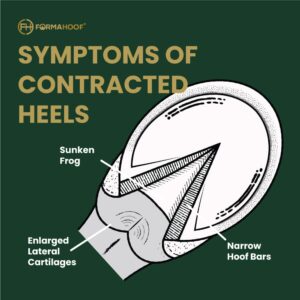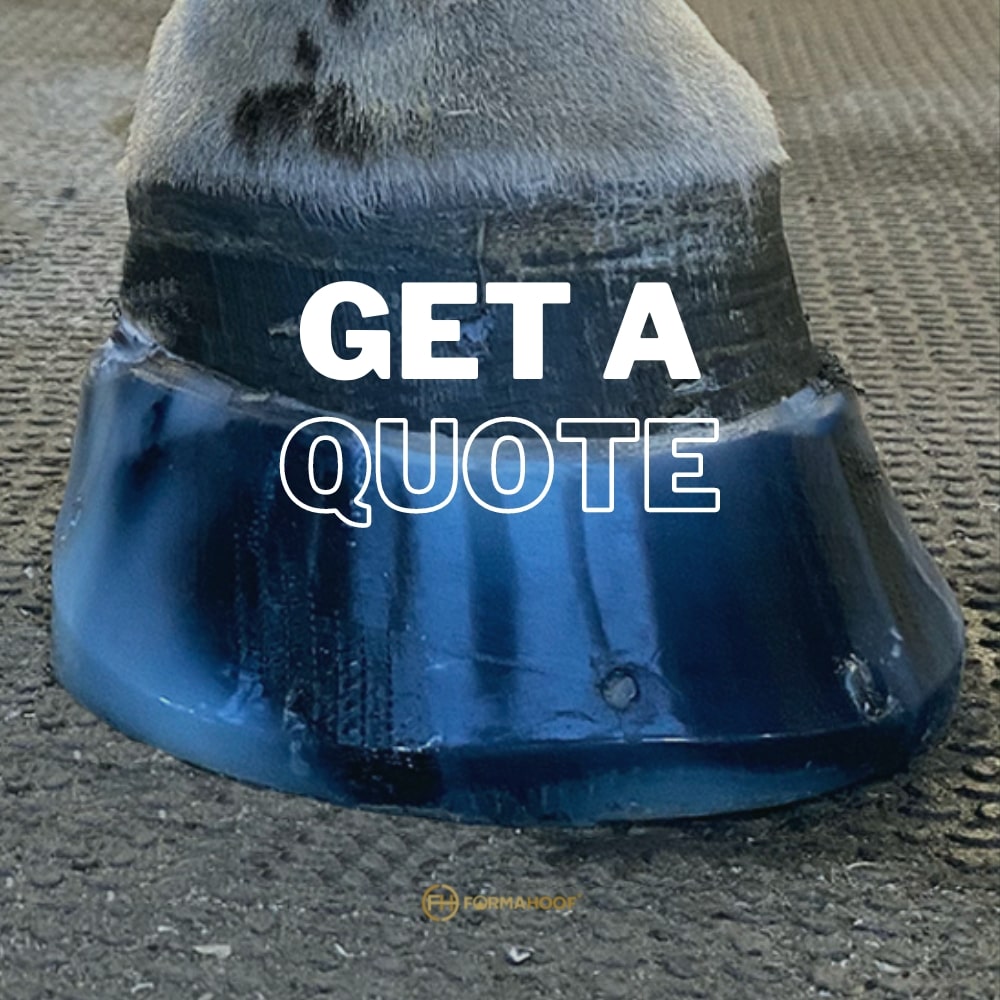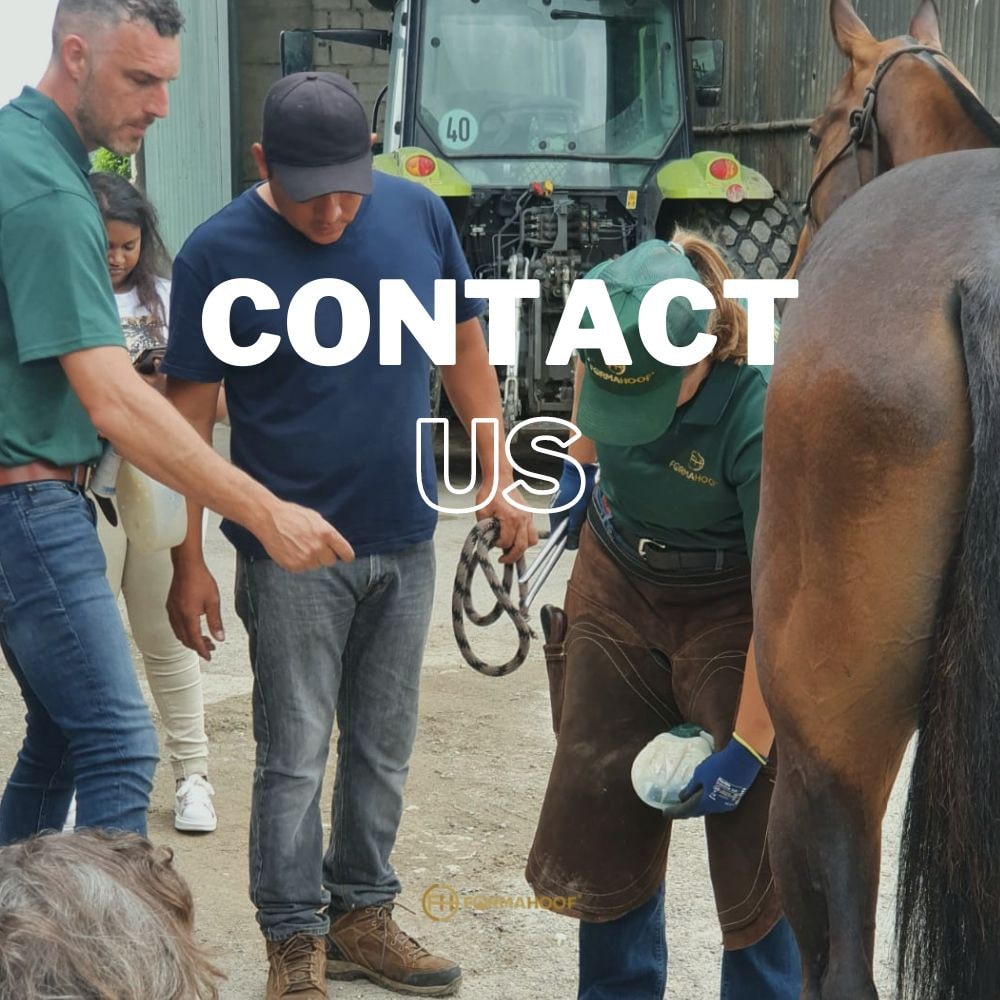with FormaHoof Certified Applicator & Expert Joel Brown
My formal farrier education commenced in 1978 and coming from a ranching lifestyle, sound horses have always been the foundation of the cowboy life. No sound horse meant no work.
Throughout the years of ranching, shoeing and continuing education, including my return to farriery school in 1995, lameness issues have driven the conversation. My search to proactively address the issue of soundness and structure led me to FormaHoof, for which I am very thankful!
From a horseman background, my approach to farrier science is based on a holistic viewpoint, addressing the anatomy, physiology and biomechanics, to enhance comfort and balance, across all equine types and disciplines.
In totality, the hoof is the foundation that the horse stands on. FormaHoof provides a progressive modality enabling these goals, whilst providing the horse with a voice in the conversation; towards an enhanced and productive life.
The process also benefits the relationship between the horse and owner – happy horses make for a happy life. I look forward to this new era; combining farriery, equine podiatry and horsemanship, as one understanding is worth a thousand techniques, with one goal – the betterment of our equines.
Joel kindly summed up the information about a Navicular case he is working on and documented it for FormaHoof, together with much footage to show the great improvement in this horse. The next check-up is imminent and all ongoing documentation of this case and many others can also be followed on Joel’s Instagram account.
History of the Horse
This quarter horse was a referral with a navicular history. Bilateral lameness, toe landing with contracted heels. Radiographs of the horse disclosed cysts on the navicular bone, but no degeneration. Osphos (clodronate) regimen and a traditional shoeing package to ease breakover with sole support had been followed, but the owner wasn’t happy with the horses shortened stride and balance.
Additionally, through these shoeing cycles no sole and caudal growth was noted; the foot was static. The end goal was a foot balanced around the COR and a healthy caudal aspect overall; barefoot or shod.
At the initial review, M/L and A/P balance with the trim was set as best it presented, heel and dorsal toe angles disparity and a base narrow conformation were considered in setting up the mould.
Heels were elevated in the pour, allowing the horse the opportunity to add heel structure during the cycle, as CS, DIM and a felt pad provided concavity and support to the weaker structures.
1st FormaHoof Application: April 8

Mould type used: FormaHoof Reusable Traction Mould
Size: With a skinny caudal foot it is fractious to get stepped into the mould without slinging it. Therefore a Size 4 Slimline was used for these applications.
Observation before the first FormaHoof application: Heels came back more caudal toward the widest part of the frog while gaining 1 degree at the dorsal toe angle, which looks without radiographs to be a HPA for the horse.
Goals: Positive heel and bar growth. As the external sole structure improves with less distortion, the target is to straighten up the bars to just go above live sole plane to build correct external markers, then mass.
Notes: Next time it can help to pour the heels weighted in the reusable Mould to increase heel depth, a tricky one but even at a passing grade for application seems comfortable and the foot improved.
Application Check at 3 Weeks: April 28

The opportunity presented to review the horse, mid cycle. With the base narrow conformation, a medial flare had been an ongoing issue.
This was addressed with a simple rasp trim of the application, the dynamic review notes a flat landing and smooth stride, matching the owner’s expectations.
Notes:
I’m very satisfied with the static and dynamic evaluation of the horse and the integrity of the FormaHoof application. As the horse is base narrow, I applied mechanics with a medial trim and a touch more toe roll to enhance the breakover. I removed the traction devices (studs), navicular cases can exhibit discomfort in the centre of the frog and posterior.
Additionally, the medial coronary band has relaxed from the initial appointment and the horse is landing flat, loading evenly, breakover and stride length is greatly improved. The horse and client are happy.
A dynamic view of a navicular case in FormaHoof after the first 4 weeks. The balancing act in navicular therapeutic work is relieving posterior hoof discomfort; the past history has been from toe landing to a short choppy stride in a COA breakover package now to FormaHoof.
As the conformation is base narrow, slight medial trim of the FormaHoof application on the near front, at 3 weeks, enhanced the overall balance. The ability to adjust the balance as the horse is given the opportunity to grow new hoof structure is a real benefit.
2nd Application: May 8

Six weeks past the first FormaHoof application, the second set is on!
The sole, frog and bar growth has been extensive and although a weak structure, the heels expanded and grew. The DIM remodelled into the collateral grooves; it was initially modelled across distal P3. Noted a 1-degree increase in toe angle. The choice at the second application was to elevate the heels again, and follow the same sole prep, promoting caudal engagement and heel growth.
Notes:
Very pleased with the sole, bar and heel growth, the stressed coronary band is much improved and HPA matches the horse. At the initial consultation, it was agreed a shortened cycle would facilitate growth of improved structure and realignment at a shorter cycle would facilitate these goals.
3rd Application: June 2

Once the old applications have been removed before the third application; the changes show further improvement in the sole, bars and heels. Straight and tight structure replaces the shelly flaky structure, shown four weeks previous.
“A great improvement in the digital cushion was noted as the structures relaxed and widened.”
As the structures were more aligned, a less intrusive trim was applied, retaining the sole depth, heel height and frog. The FormaHoof Antibacterial spray and heat with proper prep was utilized, along with a 4 mesh ply through the heels at the pour. Good improvement in the defined goals, another degree of toe angle was gained, no additional elevation was applied in the pour as the heels were set “in the ground.”
The horse is moving the best the owner has seen in years; carrying in a full work schedule and the remodelling goals are on track. A Barefoot Mould application was applied on this application; with a little less polymer through the toe, which should allow the goal of a longer 8-week-cycle, facilitating the toe wear ideally through the application, to further remodel the A/P balance.
Notes:
It’s an awesome change in 60 days, FormaHoof has opened the door for a better future for this horse and owner, I’m happy to be able to offer this opportunity for the horse to rebuild its foundation – the hoof.
Changes:
Switched to that new Barefoot Regular Mould to go for a full 8 week cycle, even if the application might need some extra trimming. The horse runs a medial flare as it is base narrow, in my opinion trimming to balance often grows a straighter, correct structure.
19 weeks in FormaHoof: August 19

I used a month cycle between applications as I needed to finally trim the heels back. The goal for the last month and a half has been to map the foot, exfoliate and primarily trim the weak structures and toe. This allowed a heel trim off 3/8” or so towards the widest part of the frog while the dorsal toe angle has remained a consistent 56 degrees.
I’ve worked toward a symmetrical pair of front feet as the underlying base narrow and pigeon-toed issues cause capsular rotation and a noticeable height and thickness of stratum medium, the heel angles are getting more symmetrical to the toe angle and I’m pleased the m/l hoof walls are balancing out. As the frog descends and the foot deepens the remaining issues look to be on track to find proper balance.
I’ll reapply at 6 weeks next week which will be about 26 weeks in FormaHoof. Horn density and quality are much improved, I’m still chasing a bit of stretching in the Zona Alba, but as there’s a dominant larger right hoof, trimming exactly to the sole plane has been secondary to symmetry of pairs and establishing balance. Seems there’s always a trade-off.
